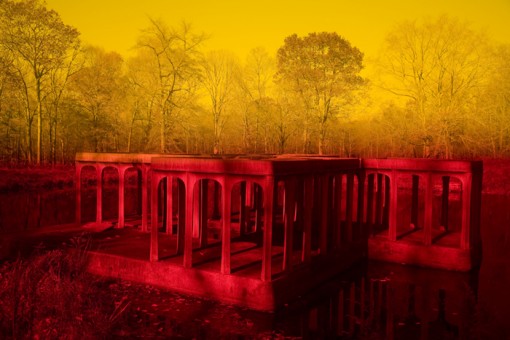
James Welling
“Not seeking out a resemblance – the formula is definitive – does not mean distrusting all semblance but rather achieving a resemblance that does not resemble.”
Zong Bing (375-473 AD), on painting.
(Francoise Jullian, Jane Marie Todd tr.)
“Consensus consists, then, in the reduction of politics to the police.”
Jacques Ranciere
“The general loss of memory is not to be explained solely psychologically; it is not simply childhood amnesia. Rather it is social amnesia—memory driven out of mind by the social and economic dynamic of this society.”
Russell Jacoby
Theatre is about space. It is also about history, in the sense of both memory and historical learning. But it is a ritual space, and in at least a sense, a ritual memory. The first thing to eliminate is message. Of course there is a message, but the playwright cannot really know about that ahead of time. But this is really the heart of an aesthetic regression in Western culture today. It struck me recently that seeing a large space without bodies, space without people, immediately triggers certain emotions. Architecture is the most useful art form for playwrights. Modern architects looked to eliminate symbolism. The meaning of a building, or any structure, was to be discovered in the physiognomic qualities of the form. Of space. I suspect that architects always, even if they deny it, are never really firstly building for people. They are building to behold the emptiness.
And it is impossible to eliminate symbol. The development of a vocabulary of form has taken a number of different directions over the last one hundred or one hundred and fifty years. A good deal of modern architecture borrowed heavily from industrial building, and from painting and sculpture. Theatre largely ignored these developments. Of course theatre used all sorts of materials even if the writers and directors pretended not to. Robert Venturi’s 1972 “Learning From Las Vegas” triggered a new dialogue among architects and artists in general about the incorporation of mass culture into art, and specifically into architecture. As he wrote; “Roadside copies of Ed Stone are more interesting than the real Ed Stone”. Edward Durrell Stone designed Radio City Music Hall and Kennedy Center and appeared on the cover of TIME magazine. But Venturi (and Denise Scott Brown and Steven Izenour) were right.

2 Columbus Circle, Ed Stone architect

Andy Warhol
“The real problem of art criticism today is to reconstitute the critical spirit as such. Then that spirit can be used to reconstruct authenticity in art – to reconceive art in terms of its deeper intentions, forgotten even by art itself. The depth of art’s transformative intention toward the world has been obscured – to the extent that art seems to have lost all subliminal force – by its commodity identity and its broad culture industry use as a ratification of the status quo of social appearances as well as principles, that is, its use as another administrative technique of control.”
Donald Kuspit
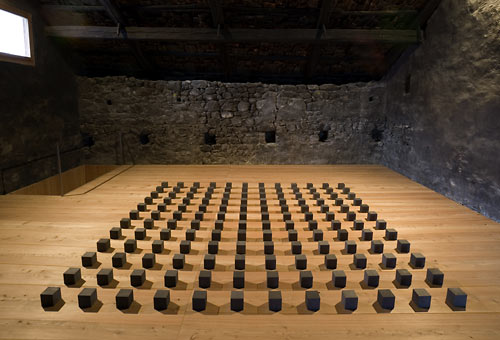
Carl Andre
Art is controlled in the service of itself controlling. This is connected to education, as I described it above. The question for art, and more specifically for theatre, is found in the tension of what constitutes the real. For in this society of rampant obedience to almost any authority, where the very bedrock foundation of education is the teaching of submission, but submission to a system of repression, not submission to the ecstatic – the idea of reality is one that feels ever more synthetic and mass produced. Reality is confined to expanding bureaucratic and administrative institutions and the logic of the corporation. It is data and classification.
Adorno said; “It is as if art works were reenacting the process through which the subject comes painfully into being.” I’ve always thought, and felt, this to be the essential quality of creation. I think it accounts for the persistence of crime as a topic or theme, and for guilt and for the melancholy aspect of almost all great art. And yes, that term is going to be hotly contested. But the very fact that mentioning “great art” is going to land one in much contested discussion is rather proof of its importance as an idea. The role of education now emcompasses and encloses a relentless obliterating of rebellion, of defiance in the face of the mass produced ‘real’. Rebellion is immediately pathologized. And it is erased to the degree that barter with that merchant in the souk would likely be percieved as a form of psychological illness. Negotiation is, like public debate, resticted to very carefully laid out guidelines. Certain discussions cannot take place, but one is encouraged to debate if the outcome is either predetermined or meaningless. Buisness of course is allowed, and a collective energetic focus goes toward that topic. But business itself, under advanced capital, follows a pretty narrow trajectory psychically. For Capitalism is a psychically restrictive system that is based on domination by some, a few, and the subjugation of the many. The cultural expression of resistance is ever harder to find because resistance to the manufactured reality of today is impossible to define. This is that tricky area of autonomy that Adorno wrote so compulsively about, and was so clearly conflicted about. And the problem remains; autonomy is something one only catch of glimpse of, and I suspect, an ever more fleeting glimpse.
So, architecture, and persuasion, and obedience. Western socities today encourage submission to all forms of marketing, and it shapes ideas of, and experiences of, *space*.
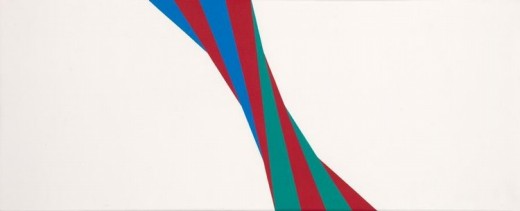
Verena Lowensberg
Again, as Adorno said, the truth content of an artwork, when experienced, was the connection with objectivity as it broke through the subjective. Donald Kuspit, often derided as ‘conservative’ (for some reason I’m not really sure about) says, this is exactly where the possibility of an autonomous self exists; in the resistance to the irrational real. The mass produced script.
To return to theatre, and the reasons for its lack of relevancy today, I think one needs to understand the implications of space and perhaps that is best explained, or at least introduced, by discussing architecture. But to discuss architecture, I think the political realities of advanced capital are inescapable. By that I mean, the very thing lost in a system of hyperreal commodities, of screen life, is the very thing upon which theatre is predicated. Empty space. The empty volume in which no figures appear. In which no project is mandated. Now, one can see quite quickly how things interceded here. The implied figure, lights, distant shadows, and additionally, if we speak of theatre, there is sound. And then there is dialogue. Spoken words. But before that, before anything, are the emotional triggers of an empty room.
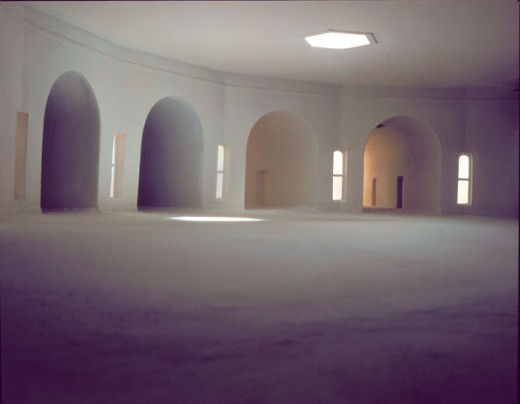
James Casebere
“In these etchings (the Carceri) the space of the building – the prison – is an infinite space. What has been destroyed is the center of that space, signifying the correspondence between the collapse of ancient values, of the ancient order, and the totality of the disorder. ‘Reason’, the author of this destruction – a destruction Piranesi felt to be fatal – is transformed into irrationality. But the prison, precisely because infinite, coincides with human existence.”
Manfredo Tafuri
On Piranesi
Alienation is the state of the collective. What is it that haunts one when viewing the Carceri? I would submit it is exactly this ruinious uncanny that is triggered when the volume of empty space reaches a certain point. The sense of anxiety is connected to the ‘silence of things’. For Tafuri, the architecture of the Enlightenment is an expression of compensation for the anguish of a system of empty signs. The buildings of the Enlightenment are tinged with guilt.
Now I suggest that the entire thrust of modern theatre connects to what Tafuri touches upon, and in a very different way what Venturi wrote about Las Vegas. And of course both connect to education and a control and colonizing of consciousness under global capital. One cannot write for the stage without understanding, at least intuitively, the forces of persuasion. The architecture of persuasion (per Venturi) is also an architecture of guilt, but of denial as well. And as Mike Davis has chronicled so well, this is the authoritarian architecture of class segregation. Students are taught to see enclosure as built on rational factory planning ideas. Their dream house often resembles a factory or prison.
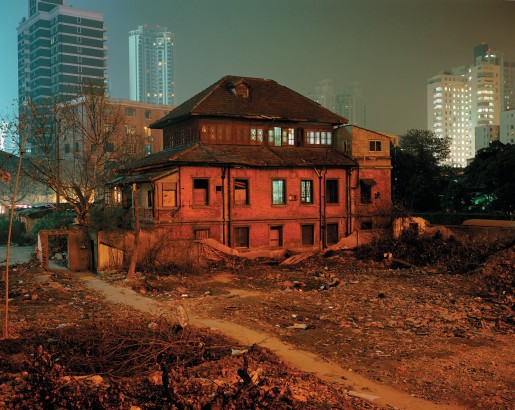
Greg Girard
Artworks carry the force of negating the madness of society, the waste and abuse, and this is that negative dialectic; negate the negation, for that is the reality today. The whole is untrue as Adorno said. Of course, it (Adorno principally) is more complex than that, and one runs into this problem at each turn, and that is to grasp the ‘real’. I’ve always sensed that one of the problems hidden within the postmodern debate had to do with the occasional, if not often, forgetting of the bourgeois point of view. Meaning, the default setting for the grammer of debate was loaded with assumptions that left it within a bourgeois set of values, and placed artists themselves in some special role that no longer existed (if it ever really did). So, it might be useful to simply look at space, and the experience of it, vocabulary aside, as both historical, and sort of trans-personal. Mass culture is today mass disinformation. Culture is mostly thinly disguised propaganda. And since I am, in theory, writing about theatre, the U.S. theatre is mostly barren, and the audience exiled to other mediums, other distractions, other “entertainments”. I posted the photo immediately above, from a photographer I admire a great deal, Greg Girard. This to me is a very theatrical photograph. It is almost a play all by itself. What and how and why are those lights on upstairs? The sick glow of the night sky of Shanghai, the office towers, the sense of fatalism — the sense of portents in the air. Now above the Girard photo is a photograph by James Casebere, of his miniture paper sets and homes and tunnels. Again, this feels like a stage, a play has just ended perhaps, or not yet started. There are other photographers whose work triggers the same feelings in me. Rutt Blees Luxumburg, who I only discovered recently, with her copper tinted urban landscapes, is plugged into the same emotional grid as Girard. And really, not far from Caselbere, Oliver Boberg, or Thomas Demand. These are works that take us back to, on one track, to Piranesi, or the feudal landscape of medieval Europe before that. The rise of the empire of empty signs, and the counter reclamation of memory.

Oliver Boberg
One of the things I mentioned in the post on Abstract Expressionism, was that the failure of many critics to recognize the element of space, or the reclaiming of space by the New York School. Clyfford Still feels a first cousin to Casebere, and to Girard, and all of them have a relation to theatre. Abstraction does not mean there is no space. I think it’s important to expand what *space* means, by understanding that space is created (or one way its created) by resistance to the integration demanded by the master narrative. Created by, what Kuspit quotes Novalis saying; “…giving noble meaning to the vulgar, a mysterious appearance to the commonplace, the dignity of the unknown to the known, the semblance of infinity to the finite…”. This is tricky, because in a sense this critical project constitutes the heterogeneous moment (per Adorno) that allows the possibility of autonomy for art. For the status quo, the maximal integrated ‘real’, the synthetic standard that serves as baseline for social domination, is what almost all kitsch is in the business of constantly reiterating. Data and classification are presented in heroic terms. This is why the self consciously *weird* is always so one dimensional feeling. It is amnesic. How can anything be weirder than insurance salesmen depicted as heroes?
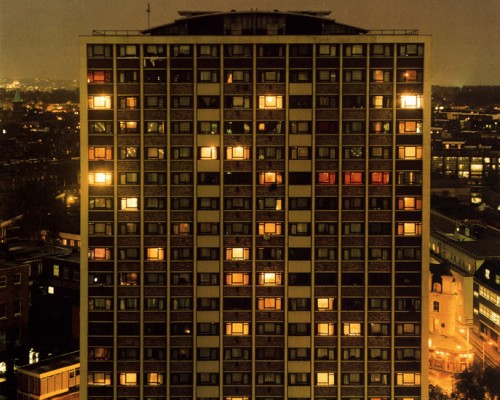
Rut Blees Luxemburg
The administered society has organized art criticism along lines that erase its tragic origin. Now it is important to note here that there lurks a danger in this emphasis on form. It is mystifying form, and object, and universalizing them. This is evident often in minimalism (and it is interesting to examine why some minimalists avoid this and others don’t). It is almost a new-age faux spirituality that sits like a toxic patina on all these *ideal* forms, these pure essences. This was a significant insight of Kuspit, even if I think he got a lot of it wrong. There is something authoritarian, and fetishistic about much painting and sculpture today, and certainly in architecture. Some of this is revealed by following the Clement Greenberg line of criticism, but more, it is connected to the substitution of commodity for practice. But maybe this is better explained by talking in terms of theatre, again. For if an off-stage is alive, as it usually is when lights come up or a curtain is raised, or some other indicator is used to begin a ‘play’. That off stage can die just as quickly because what can happen in that moment? A character, an actor, appears. What does he or she say? If one looks at the haunting Oliver Boberg photograph above and imagines a person entering that space, then that is the play. But this is the exact moment in which the impossibility of theatre is revealed. Nothing can be said, no gesture, no movement, that is not a cliche. It is impossible. For everything has been said and done. So is that it? Lights out. End of play? No, for it is at this moment that the dialectic happens, or the potential for it can happen. And this is the art, in a sense. This is the tragic awareness of the impossible. The playwright must accept that this play will fail. It is going to betray the space. It has to. The kitsch artist will not admit failure. He or she will explain what this moment means. What all of his or her moments mean, and why the audience *should* listen and watch. At a psychological explanation might take place. An hour or so of explaining and performing something inherently dishonest, because it is fundamentally denying that moment when the off stage died. In the meantime it will entertain you. The illusive alternative to this is to wait. That is the practice. For something is taking place. The playwright can then allow the audience to know of the failure that is going on, right now, on stage. The recognition of the impossibility is a question. It is the humility of inadequacy, of insufficiency, of lack. The only truth is for the play to say, somehow, look… off there, over there, elsewhere, something must be going on. We will listen, and be patient. This is also the blueprint of Noh drama, and of marionette theatre, and Kathakali. And I suspect strongly of Greek Tragic drama. For this is the birth of ritual on stage.
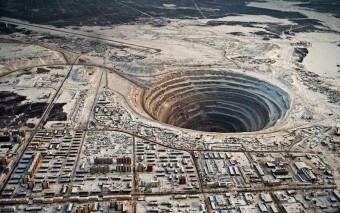
Mirny diamond mine, Siberia
Now forgive me one more digression of a sort.
http://www.truth-out.org/news/item/23305-the-bleaching-of-san-francisco-extreme-gentrification-and-suburbanized-poverty-in-the-bay
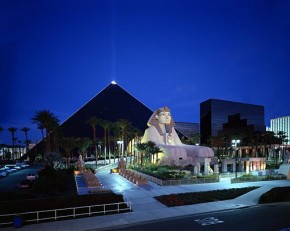
Luxor Hotel, Las Vegas
Robert Bly once wrote, long ago, when he wrote a lot of criticism for his Fifties small press journal, that one of the worst trends in English language poetry had been to exclude nature, and to make the human the single important topic. Man is revealed by nature, not the other way around. The storm in King Lear, the meteor showers that open Blood Meridian, and the sea is really the subject of Moby Dick as much as anything else. Now nature is not the Sierra Club version, or National Geographic or the Nature Channel, though I suspect many in the U.S. compose their image of *nature* in accordance with such places. Tacit in such imagary is the conquest of nature as a built in component. Conquest as utilization. None of these thoughts are exactly new, but the point for writing, is that narrative does not begin with an assumption about imposing meaning or message, which is a form of conquest.
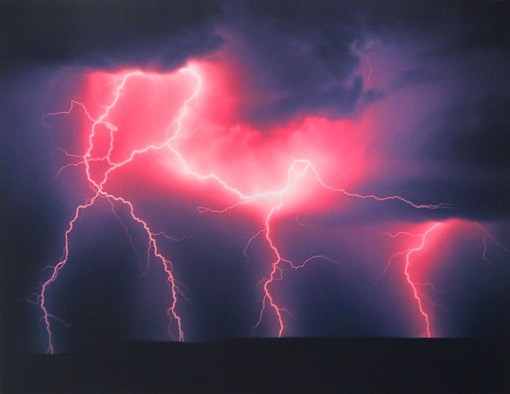
Jack Goldstein
Now, marketing today is so pervasive that all aesthetics bears some imprint. Market dominance is created by a variety of factors, but artworks certainly interface today with all of these factors. Keith Haring designing Vodka bottles, gives an aura of exclusivity to an otherwise mid level product. For marketing plays on associations. This is branding, and Haring was able to work for Absolute because he himself had a brand. Fine arts inch ever closer to mere graphic design now, and young visual artists tend to create work that will reproduce well in glossy magazines. Now, since we’re supposed to be discussing theatre and playwrighting, the branding of theatre artists is much more difficult because nobody goes to the theatre anymore. Instead, you brand individual plays. I suspect people remember the title Bengal Tiger at the Baghdad Zoo, more than the play, and more than they remember the name Rajiv Joseph. That was a great title, by the way, for branding purposes. But there are few playwrights today who write more than one play that can be deemed a *hit*. But the point is, and has been for a while now, that institutions try to develop hits, not playwrights. After all, the play makes the money for you, not the writer.

Las Vegas, 1960s appx. (Courtesy Jack LaVine)
So, the point I am trying to make is that *space*, that basic empty stage, a stand in for nature and the infinite, is the site of the impossible. And that from that recognition, meaning begins to coagulate, in a sense, the clotting of a metaphysical blood and that this meaning is inherent because as Adorno said above, all creation is, finally, the story of our own formation, is some form of autobiography. Jameson correctly pointed out that even the most sophisticated Marxist analysis of cultural products will always pressupose, at some point, those products to be instruments and expressions of class domination, and social mystification. And he goes on to suggest that instrumental logic is the great pitfall of Marxist analysis, at least for artworks. Quoting Ricoeur’s exhaustive analysis of Freud; “Hermeneutics seems to me to be animated by this double motivation: willingness to suspect, willingness to listen; vow of rigor, vow of obedience.” So that vast grotto, or high snow covered mountain peak, is both an elemental form, a site of silence, an organic commentary on mortality, AND the site of some part of our own, perhaps forgotten, perhaps not, psychic development. Our missing father, our symbolic abandonment, the wounds and trauma of childhood are found in the inherent allegorical space of the grotto (or diamond mine, or parking garage, or wetland, or bog) and our incessant need to fill that lack, is the reason for having a stage and an off stage. There is a narrative to everything. But those factors also don’t preclude class analysis, and in fact, that should feel inescapable.
And understanding space, being able to read Louis Kahn’s Bangladesh government complex as a piece of theatre is the sort of understanding that needs to be taught. Not writing formulas, or kitsch, or the banalities of current Broadway plays. Resistance, refusal, that is the first step for education in the arts, and probably for all education. But the creation of an audience is necessary. One that can see LeCorbusier as essential reading, and Zeami, and Confucious and Marx and Dante, and paleolithic cave art. The poetry of a boarded up laundromat, or abandoned coal mining towns; to somehow counter the specialization of pedagogy today.
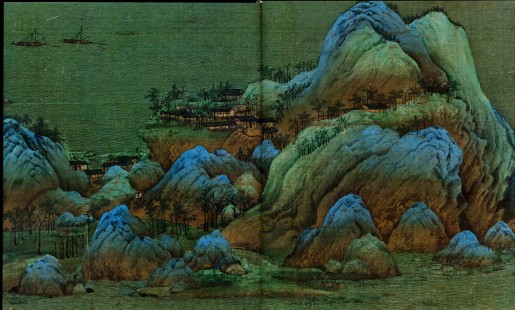
Wang Meng, Yuan Dynasty, 1385 appx
Russell Jacoby wrote something very pertinent to this:
“Freudian concepts exposed the fraud of the existence of the “individual.” To be absolutely clear here: the Freudian concepts expose the fraud, not so as to perpetuate it, but undo it. That is, unlike the mechanical behaviorists, the point was not to prove that the individual was an illusion; rather it was to show to what extent the individual did not yet exist. To critical theory, psychoanalysis demonstrates the degree to which the individual is de-individualized by society.”
Under a system bent on control, the only opportunity for undoing this manufactured blindness is going to be in art, in culture. This is often decried as a cliche, and often so by leftists, but that is because the policing impulse runs very deep today.
The callus indifference to art is based on a callus indifference to the world around us. Character comes out of dialogue. Dialogue comes out of space. Space must be seen, first, to be space.
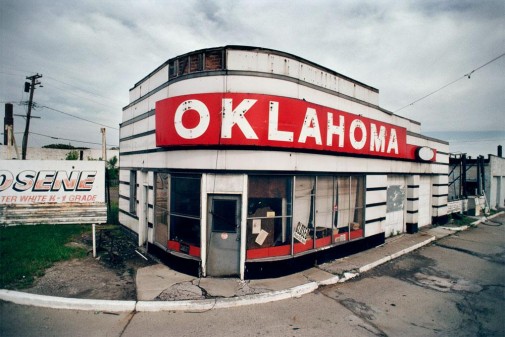
Camilo Jose Vergara, 1996, Livernoise Avenue, Detroit.

Nice post. The idea of a theatrical space reminds me of King Lear’s cliff scene. The idea that a flat stage surface can refer to many things, so long as the words of the characters portray the idea of a cliff that’s not merely physical but also psychic, precisely because of the lack of set and illusionistic qualities of a bare stage + words.
It also reminds me of Peter Brook’s comment on Shakespeare’s theatrical practice, where scenes move past in an almost cinematic way, without breaks, one scene flowing fluidly into another due to the minimalism and use of language. The juxtaposition between scenes become a sort of “cut”. And when you have lavish productions with set changes, that gets broken. The space stops being continuous. You’re no longer in a world where the interior and the exterior are wedded psychically… instead you have the disembodied words, and an external space/set that’s separate, and there’s a gap in between.
It also makes me wonder what you think about the new wave of multimedia “experiments” (sic) in theatre nowadays. It’s always felt like a philistine betrayal to me — a betrayal of both text AND space. And also incongruous, because how can video be incorporated into stage? It’s like what Bresson says — the two arts are completely in a different realm. On stage, a tree is only a prop, but the prop tree doesn’t need to be a tree — in fact, it MUSTN’T — but **only then** can it convincingly represent a tree to the imagination. So what would video even mean on stage? It wouldn’t represent anything. Multimedia theatre, to me, is as if a circus routine involved one who juggled and another who watched and ate pizza. It’s just wholly incongruous. I think that’s really what Grotowski was going for — purifying theatre of all that’s distracting and incongruous.
And, oddly enough, extremely UNcinematic. The bare shakespeare with the fluid scenes is somehow far more cinematic, in fact, quintessentially cinematic.
@Exir…………Thats all exactly right, I think. You should read Jan Kott’s Shakespeare Our Contemporary….especiallty his chapter on Lear and in particular the mad tom on the cliff scene. Because the truth of what you say goes even deeper ….for that scene, what is revealed, or rather the truth of that scene cannot occur anywhere but on stage. In a sense it cannot be thought anywhere else. Its meaning is in the performance ……but I think you can take Artaud’s Jet of Blood….the final scene has stage directions that include, ‘severed penises fall from the sky’. Well how are you going to do that in a film?> Some crude sort of latex special effects. In theatre, I saw a production in which red roses fall from the rafters…..that is why theatre is different.